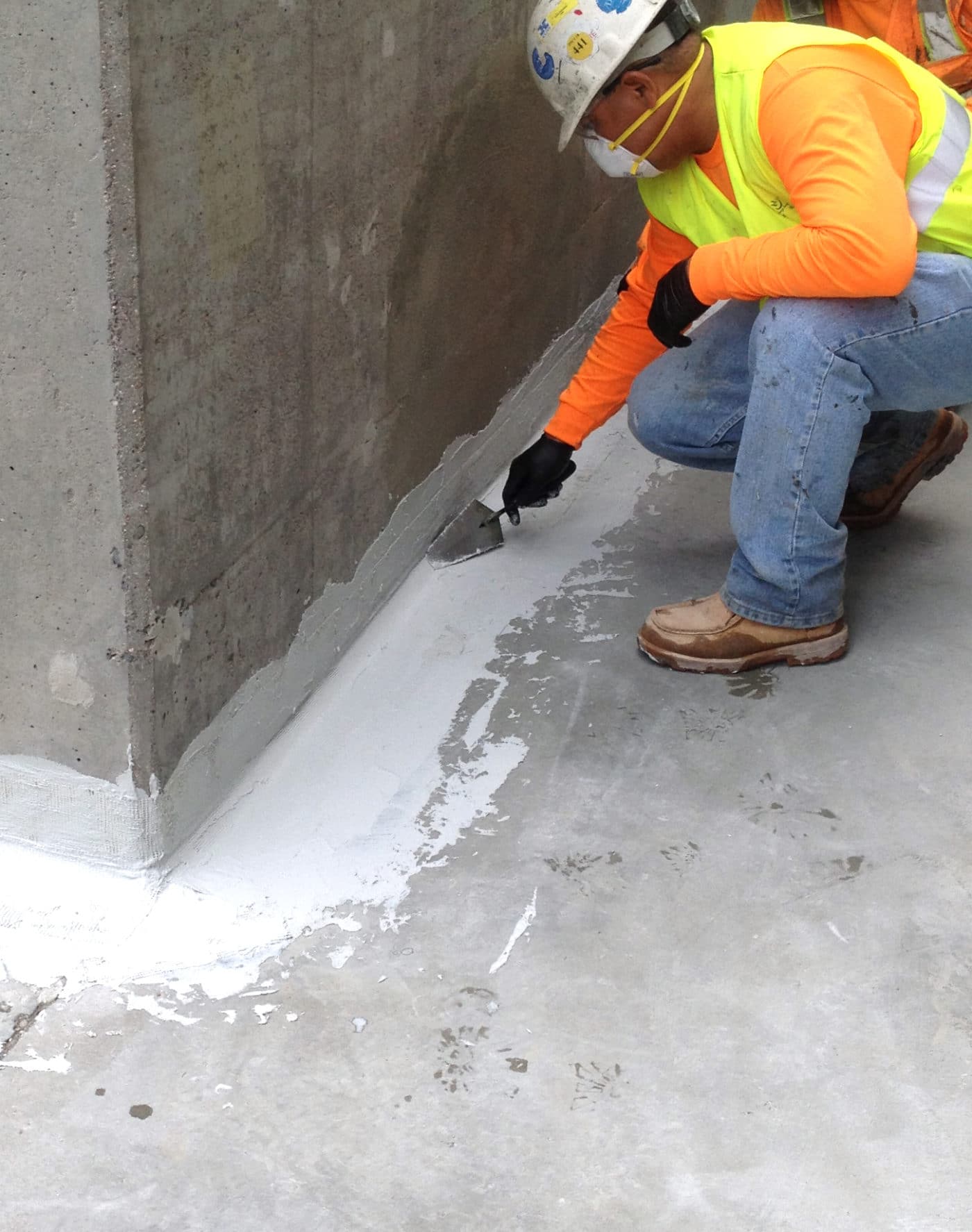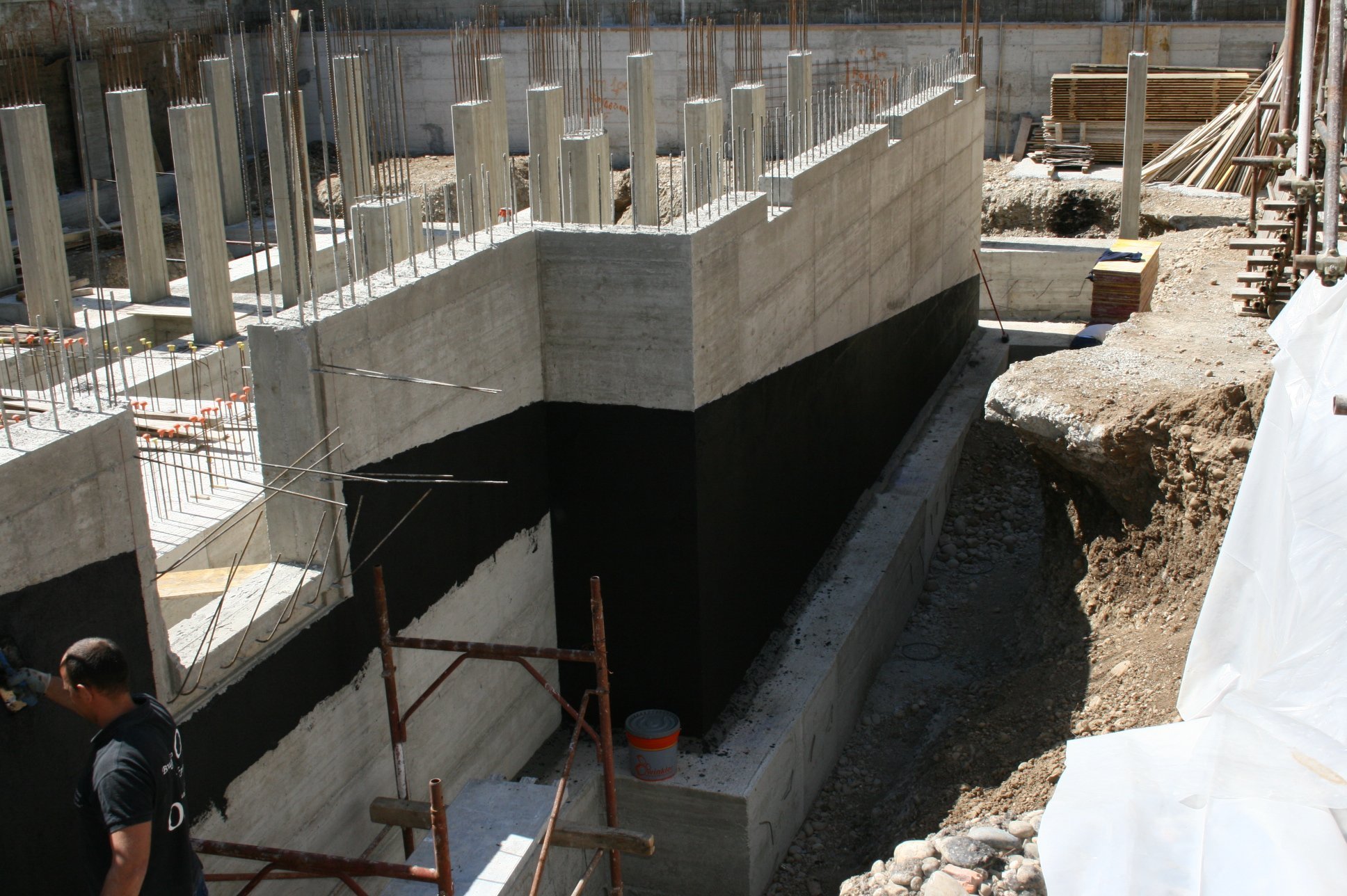Exactly How Waterproofing Functions: A Detailed Check Out Methods and Technologies
Waterproofing is crucial for protecting structures from moisture-related damage. It includes numerous strategies and innovations that create obstacles against water breach. Traditional techniques, such as compressed clay, coexist with modern innovations like liquid-applied membrane layers. Recognizing the subtleties of these methods is essential for effective application. Nonetheless, the efficiency of any waterproofing remedy hinges not just on the strategies utilized yet likewise on recurring upkeep and evaluation. What are the crucial factors that affect lasting efficiency?
Understanding the Essentials of Waterproofing
Waterproofing is a crucial process that shields structures from water intrusion, which can bring about substantial damages with time. This method includes the application of various materials and methods designed to develop a barrier versus dampness. The primary objective is to avoid water from permeating surface areas, which can trigger damage, mold and mildew development, and structural instability.Various elements influence the selection of waterproofing technique, including the kind of structure, its location, and environmental conditions. Understanding the physics of water movement and the properties of various materials is important in selecting an effective waterproofing solution.Effective waterproofing not just safeguards buildings however also improves their durability and stability. Commonly, it is integrated into the design phase of building to assure extensive security. As recognition of water-related problems grows, the significance of recognizing waterproofing basics comes to be progressively clear to engineers, building contractors, and homeowner alike.
Conventional Waterproofing Methods
Standard waterproofing approaches have been made use of for centuries, relying upon tried and true techniques and materials to guard structures from water damage. One of the oldest methods involves making use of clay, which, when compacted, creates an all-natural obstacle against moisture. Furthermore, bitumen, a sticky, black product acquired from oil, has been employed for its waterproof properties, typically related to roofs and foundations.Another strategy includes the application of lime-based plasters, which supply a breathable layer that enables moisture to leave while preventing water access. Thatch roofing, a traditional technique still seen in some societies, uses excellent waterproofing because of its firmly loaded straw layers.Moreover, the usage of stone and block has been famous, as these products are inherently resistant to water when correctly set up. Overall, traditional waterproofing methods emphasize the relevance of picking proper materials and building and construction methods to improve resilience versus water invasion.
Modern Waterproofing Technologies
Improvements in modern-day waterproofing technologies have actually changed the method structures are safeguarded from water damages. Cutting-edge techniques such as liquid-applied membranes and sophisticated sealers have enhanced the performance and adaptability of waterproofing remedies. These innovations permit for seamless application, decreasing the threat of leakages and ensuring comprehensive coverage over complex surfaces.Moreover, the integration of smart modern technologies, such as moisture sensing units and automated monitoring systems, allows real-time analysis of waterproofing performance. This proactive strategy facilitates timely upkeep and lowers lasting fixing costs.Additionally, advancements in spray-applied finishes provide fast application and exceptional bond, adapting to numerous substratums while giving durable protection. Techniques like polymer-modified systems even more improve versatility and toughness, making them appropriate for varied settings. Overall, contemporary waterproofing technologies not just alleviate water invasion yet also add to the long life and sustainability of frameworks, noting a significant change in the industry.
Products Made Use Of in Waterproofing
The performance of waterproofing services greatly relies upon the materials used in their application. Various products are used to produce barriers versus water ingress, each with distinct buildings fit for different settings. Typically used materials include membrane layers, coatings, and sealants.Liquid-applied membranes, usually made from polyurethane or acrylic, create a smooth barrier that adapts to intricate surface areas. Sheet membrane layers, generally built from rubber or polycarbonate, offer durability and are ideal for larger locations. Furthermore, cementitious waterproofing materials, composed of cementitious substances, provide excellent attachment and flexibility.Sealants made from silicone or polyurethane are important for joints and seams, ensuring detailed security. Sophisticated products, such as geo-composite get more membrane layers, combine several features, enhancing efficiency. On the whole, the selection of waterproofing materials is essential in attaining durable and effective water resistance, customized to certain task demands and environmental conditions.
Common Applications of Waterproofing
Waterproofing plays a crucial duty in various sectors, ensuring the longevity and honesty of frameworks. Usual applications consist of property services that shield homes, commercial facilities that safeguards companies, and industrial setups that call for robust protection against dampness. Comprehending these applications highlights the relevance of waterproofing in preserving both safety and security and capability across different environments.
Residential Waterproofing Solutions
Lots of house owners deal with difficulties with moisture intrusion, making reliable property waterproofing options important. Various methods exist to resolve this concern, including exterior and interior waterproofing systems. Interior solutions often entail the application of sealants and coverings to cellar walls, which help protect against water infiltration. Outside approaches normally consist of the installation of drain systems and water resistant membrane layers that divert water away from the foundation.Additionally, property owners may consider sump pumps to remove water build-up and dehumidifiers to manage moisture degrees. Correct grading and using gutters additionally play a crucial role in taking care of water flow around the home. By carrying out these techniques, homeowners can considerably minimize the danger of water damages and mold development, making sure a dry and secure living atmosphere.

Industrial Framework Defense
Effective waterproofing services play a crucial function in the security of commercial next page facilities. Basement waterproofing Omaha. These techniques are essential for guarding structures, parking frameworks, and bridges from water damages, which can endanger structural stability and result in expensive repairs. Usual applications consist of the setup of membrane layers, finishes, and sealers that create barriers versus moisture seepage. Areas such as basements, roofing systems, and exterior wall surfaces are frequently focused on to ensure longevity and durability. Furthermore, waterproofing systems can enhance power effectiveness by preventing water-related problems that might cause mold and mildew development and degeneration. By implementing durable waterproofing steps, residential or commercial property proprietors can protect their financial investments and keep functional efficiency, inevitably adding to the overall sustainability of industrial facilities
Industrial Applications Review
While numerous sectors face unique challenges, the need for dependable waterproofing services continues to be a continuous in industrial applications. Industries such as manufacturing, building and construction, and energy frequently experience settings where moisture direct exposure can endanger structural integrity and functional performance. In making facilities, waterproofing is vital for shielding equipment and products from water damage. In building, it safeguards foundations and basements against groundwater infiltration. The power market counts on waterproofing for the defense of devices in hydroelectric plants and overseas structures. Furthermore, food processing industries use waterproofing to ensure hygiene and conformity with security standards. Overall, reliable waterproofing options are essential for enhancing resilience, safety, and performance across numerous commercial setups.
Maintenance and Durability of Waterproofing Solutions
Although waterproofing solutions are designed to use long-term protection versus dampness intrusion, normal maintenance is vital to assure their efficiency and longevity - Basement waterproofing Omaha. Routine assessments play a significant function in determining potential problems such as splits, peeling, or signs of water damage. Resolving these problems quickly can stop more deterioration and expensive repairs.Additionally, cleaning up the surface area of waterproof locations helps remove dirt and particles that can compromise the honesty of the waterproofing barrier. It's likewise recommended to reapply safety coverings or sealers as recommended by manufacturers to keep ideal efficiency. Environmental factors, such as UV direct exposure and severe weather, can affect the lifespan of waterproofing products, making regular evaluation vital
Regularly Asked Questions
Can Waterproofing Be Applied in Winter?
The concern of using waterproofing in cold climate raises concerns regarding adhesion and treating. Many products might not execute at their ideal in low temperatures, demanding careful selection and factor to consider of specific guidelines for effective application.
The Length Of Time Does Waterproofing Generally Last?
The duration of waterproofing effectiveness varies based upon products and ecological aspects. Usually, it can last from five to 10 years, but normal maintenance and examinations are necessary to guarantee peak efficiency and durability.
Is DIY Waterproofing Effective and Safe?
The efficiency and security of do it yourself waterproofing depend upon different aspects, including worldly quality and application method. While some individuals attain have a peek at this website satisfying results, others may run into problems that compromise lasting protection and architectural integrity.
What Are the Signs of Failing Waterproofing?
Indications of falling short waterproofing consist of noticeable water stains, peeling off paint, mold and mildew development, musty smells, and wetness in walls or ceilings - Sump pump discharge drainage Omaha. These indicators suggest endangered barriers, requiring timely evaluation and possible remediation to stop further damage
Just how Do I Choose the Right Waterproofing Specialist?
